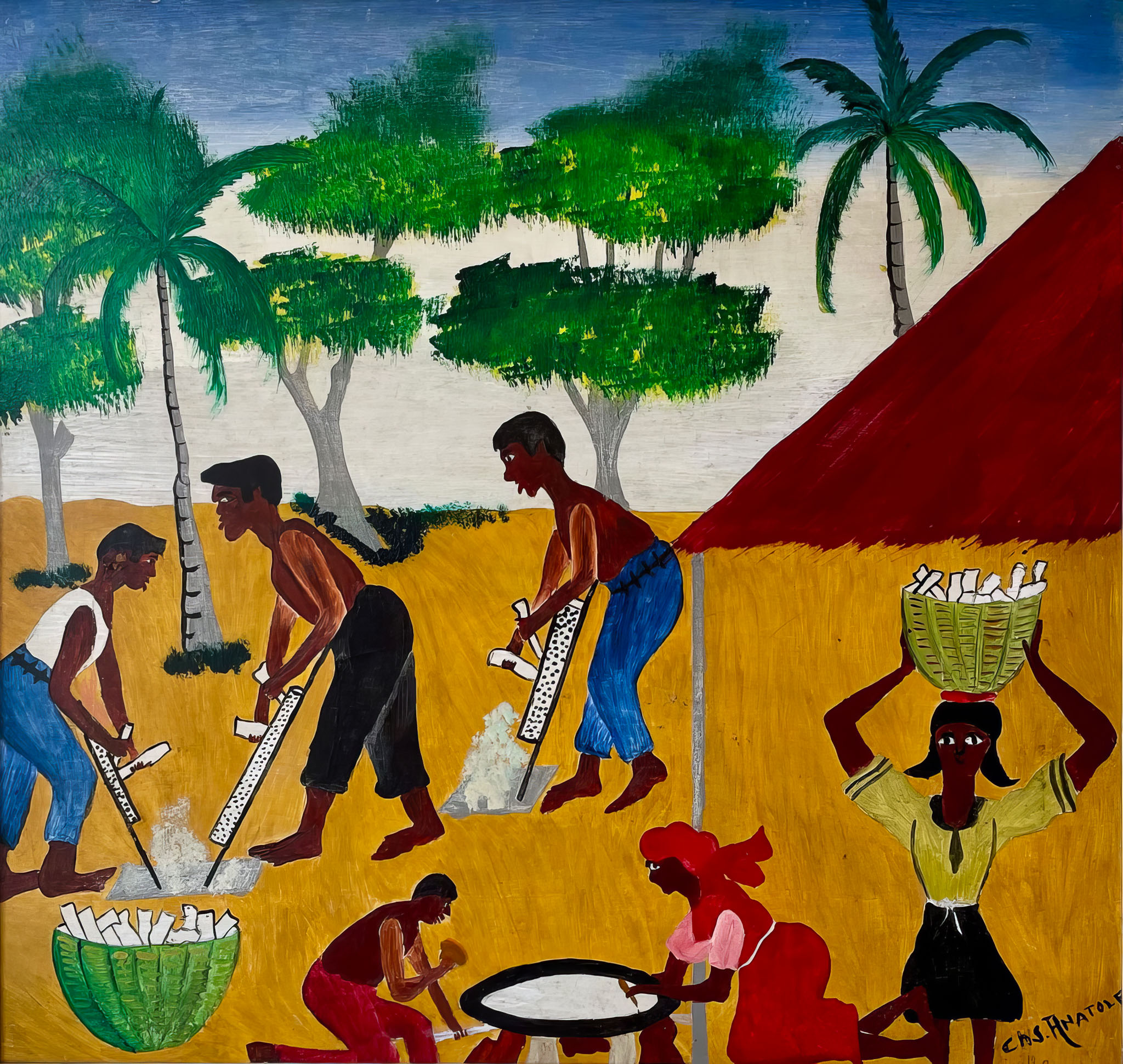Postcard From Haiti: November 2024 by Rick Forgham
When the Haitian artist Charles Anatole painted The Making of Kasav back in the 1960’s he was illustrating a bread making process that is deeply ingrained in the culture of the Haitian people. The yuca plant which in Haiti is often referred to as Manioc, came to the island from South America. Yuca was cultivated on the island of “Ayiti”, as it was known by the Taino for hundreds of years prior to the arrival of Columbus in 1492. Now in the 21st century the plant can be found in most of the temperate zones of the world and it currently provides a healthy supplement to the diets of over a billion people globally.
The root tuber of the Yuca was considered sacred by the Taino who inhabited the region now shared by Haiti and the Dominican Republic. This reverence was because the plant could sustain life when processed and baked into a wafer-thin bread, or it could bring life to a close by ingesting the cyanide poison that naturally occurs in the leaves and root tubers of the Yuca plant. Tragically large numbers of the Taino population used this “final-solution” to escape the brutal enslavement that had been imposed on them by the newly arrived Europeans.
Some of the indigenous Taino did survive long enough to pass along their knowledge of Yuca cultivation and processing to the Maroons, who were escaped slaves of African descent that had fled the plantations and lived in the mountainous backcountry of Hispaniola. These techniques are still used today as Anatole depicted in his painting. The Yuca tubers are peeled and grated, then washed to remove the toxins. The resulting batter is then spread on a metal “platine” that is heated by a wood or charcoal fire. It takes about half an hour for the mixture to toast before it is lifted from the platine and packaged for storage or sale in the markets. Unlike flour based breads Kasav is made without the use of yeast or artificial ingredients and thus it has a relatively long shelf life.
Dominique Dupuy, Haiti’s ambassador and permanent delegate to UNESCO, is actively working with four other Caribbean countries to have Haitian Kasav ( along with the Kasav variants of the other countries ) added to UNESCO’s Representative List of the Intangible Cultural Heritage of Humanity. This important effort marks the first time that five countries in the hemisphere have joined forces to present a multinational entry for the prestigious United Nations designation. Dupuy was instrumental in successfully having Haiti’s popular independence pumpkin soup, “Soup Joumou” added to the U.N.’s Intangible List. Soon, Haiti’s humble Kasav could be honored by receiving this important cultural designation thus becoming Haiti’s second food to be held in high esteem.
In the aftermath of the COVID pandemic and the subsequent increase in cost of imported wheat flour, there has been an increase in the making and consumption of Kasav breads in Haiti. Kasav is now produced in a myriad of flavors which include ginger, herring, coconut, peanut, sugary and salty, just to name a few. However for purists perhaps Kasav is best enjoyed in the traditional way which is accompanied by applying a liberal coating of peppery Haitian peanut butter to the crunchy bread. Yummy!
If you are fortunate to have a Caribbean store near where you live there is a good chance that there will be some cassava on the shelves for purchase. We have found that a brand from the Dominican Republic is widely available in the U.S. and though not Haitian in origin it can be a perfectly good substitute. Spread a blend of parsley, garlic and salted butter on the cassava toast it in the
oven for a few minutes then enjoy Kasav as a savory snack. Yuca and its products have been a healthy and nutritious food staple for over 10,000 years of human history and the Haitian Yuca farmers and Kasav bread makers are very much a part of this vital and ever evolving story of feeding a nurturing a population.
Rick Forgham November 2024
